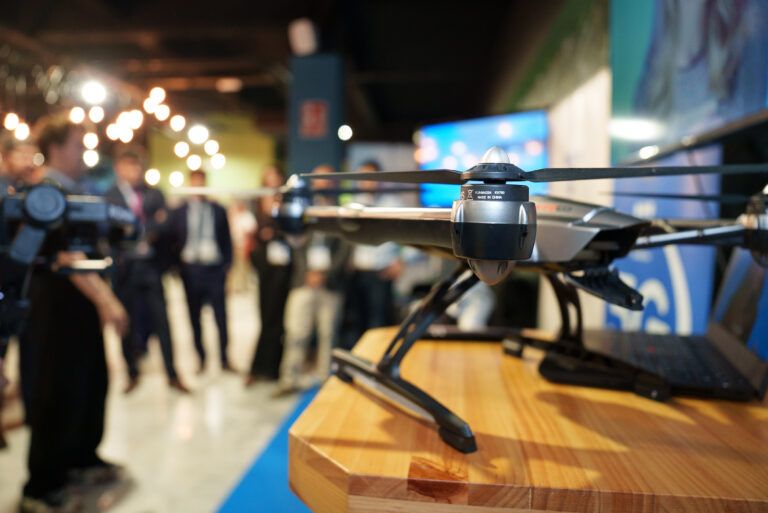
Outages, DANAs and emergencies: the priority challenges of 5G
- Telefónica and 112 Extremadura detailed 5G Slicing, an innovative emergency service based on 5G technology and Network Slicing that aims to connect and coordinate emergency teams at all times during an alert situation.
- The integration of NTNs with 5G networks is revolutionising the global telecommunications landscape by overcoming traditional limitations of coverage, speed and accessibility.
- The Cartuja Auditorium -managed by Yventu- is hosting the face-to-face sessions, which conclude on 14 May. Subsequently, the two final sessions will be held in online format on Thursday 15 and Friday 16 May.
The 5G Forum continued on Tuesday 13 May with the second day in person. More than 20 industry and 5G experts, including CEOs, executives, university professors and industry leaders, gave their views on the present of 5G technology and the future of 5G Advanced, 6G and Artificial Intelligence.
The Cartuja Auditorium -managed by Yventu-, located in the Cartuja Science and Technology Park, hosted the second of the three face-to-face sessions that will continue until Wednesday 14th, while on Thursday 15th and Friday 16th the two virtual sessions will be held in online format.
Among the many projects on display was 5G Slicing, an innovative emergency service based on 5G technology and Network Slicing. Alejandro Alonso, Network Innovation and Evolution Expert at Telefónica, together with Serafín Doblado, Technical Manager of 112 Extremadura, explained what this project consists of, which aims to “connect and coordinate emergency teams at all times during an alert situation”, said Doblado.
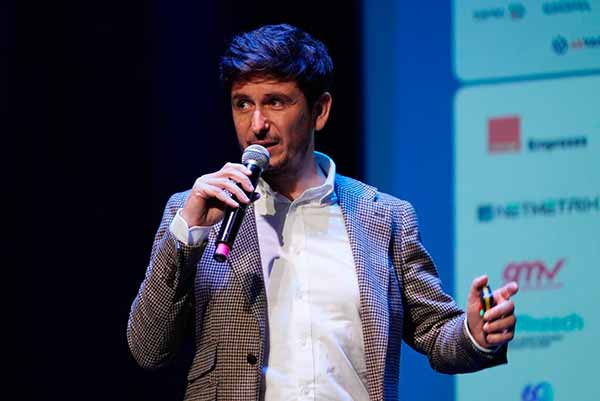
Improving the reliability and agility of emergency interventions, providing coordinated and real-time communication enriched with video, location and other visual data, and guaranteeing the availability of dedicated network resources even in times of congestion are the basis of this project developed together with Telefónica. “5G Slicing consists of dividing the company’s network into different portions dedicated to a specific service on . In this case, to the service of emergencies”, explained Alejandro Alonso, who emphasised that “we are the first operator in the country to offer this service”.
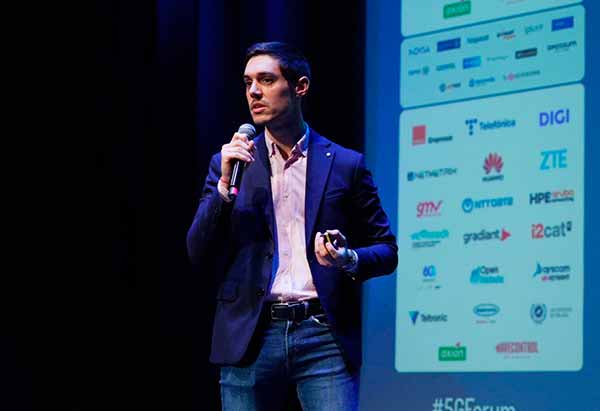
Continuing the line of emergencies, Cecilia Jordán, Director of Business Development and Industry 4.0 at Teltronic, spoke about 5G, MCX and FRMCS and how we are heading towards the new Era of Mission Critical Communications. “MCX (Mission Critical Services) allows us to work on critical voice, active listening, immediate input and short data with a very mature standard that is used in networks that cannot fail at any time,” said Cecilia Jordán.
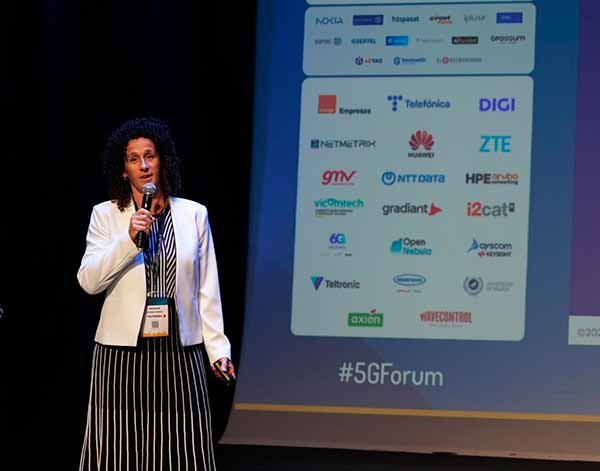
David Muñoz, from SAPEC’s Business Development department, also shared use cases in the rapid deployment of private 5G networks for Emergency/Security and TV/Media and demonstrated ‘in situ’ the 5G in box, “a solution that allows a 5G network to be set up in a matter of five minutes in difficult conditions and in unfavourable environments”.
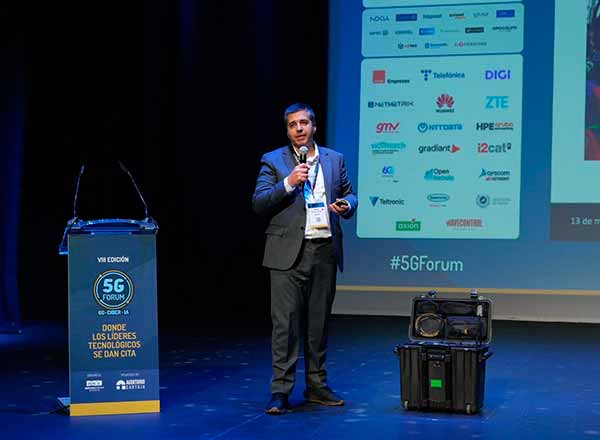
NTN networks, the future for 5G connections
The second day of the 5G Forum was attended by Taro Nakao, Vice President Global Telco Biz Enablement of NTT DATA, who accompanied Mercedes Fernández, Innovation Advisor of the Japanese multinational, who spoke about the hyperconnected revolution. “We are living in an unprecedented technological era, an unprecedented technological moment that makes us grow exponentially in any field”, stressed Mercedes Fernández, who spoke of the C89 Constellation, a communications constellation that offers “global coverage in which terrestrial coverage is complemented by HAPS and satellite networks”.
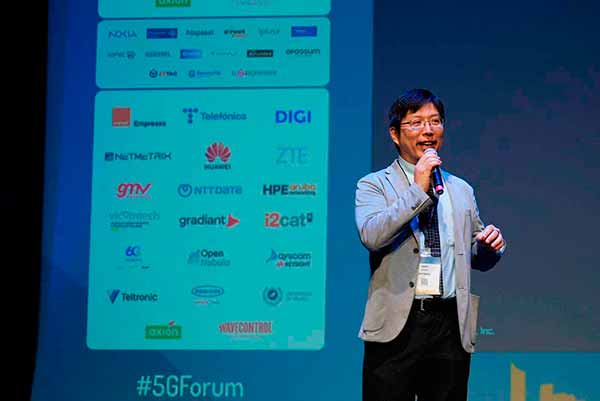
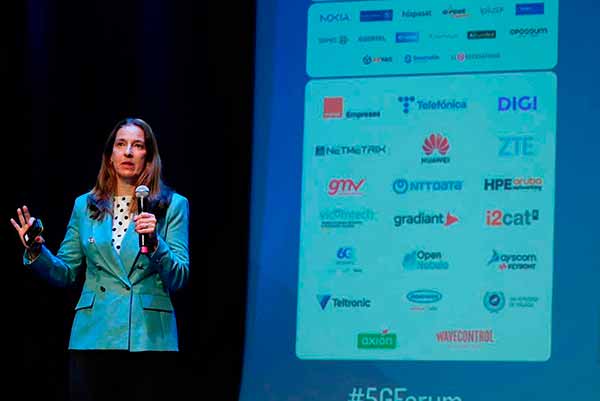
Pablo Alvarez, CEO of Netmetrix Solutions, addressed how the integration of low earth orbit (LEO) satellites with 5G networks is revolutionising the global telecommunications landscape by overcoming traditional limitations of coverage, speed and accessibility. “NTN networks must be part of future 5G and 6G networks. By 2030, it is expected that there will be around 58,000 LEO satellites to provide added value to communications,” he said, while stressing that “satellite communications can be used by virtually all markets”.
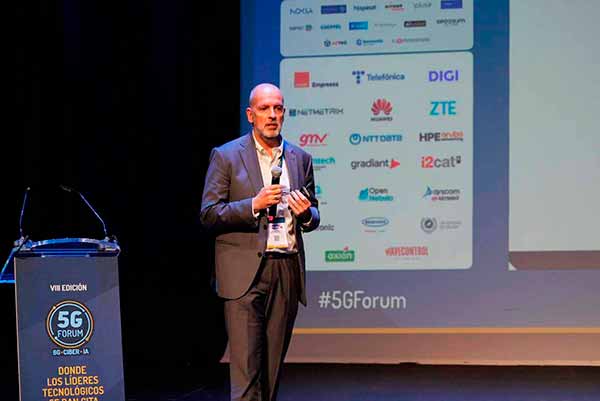
Daniel San Miguel, head of GMV’s 5G Security Solutions, gave a talk on cybersecurity specialising in the 5G ecosystem. A talk that served as a prelude to the ‘Cyber Day’ in which he spoke about the risks of the 5G standard compared to previous technologies.
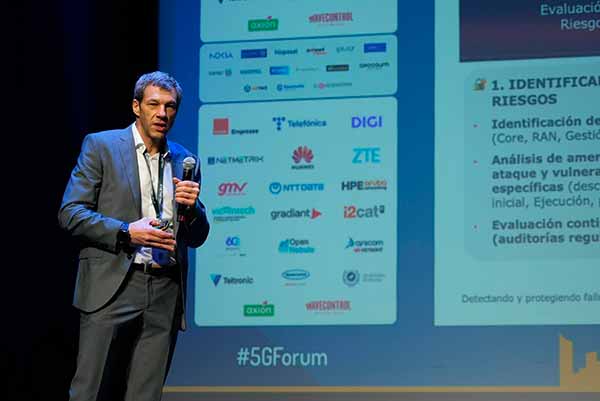
Juan Mas, CTO of Datatronics, and Sergio Ibanez, Oracle’s European 5G Presales Director for Europe, offered insights on how automation of 5G SA networks, in conjunction with continuous monitoring and learning, can help monetise the deployment investment and its evolution.
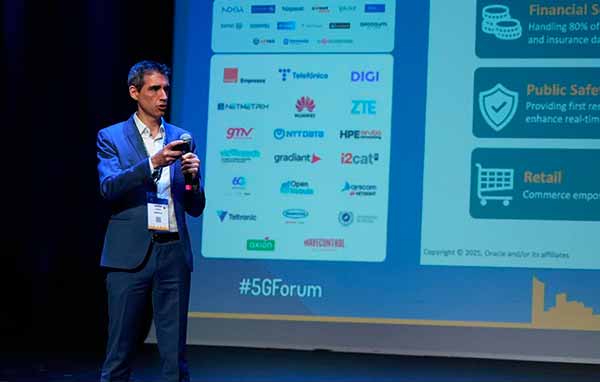
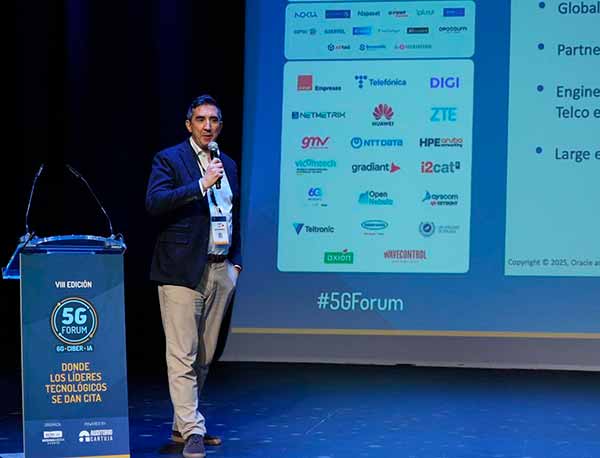
Ready for 6G?
Pedro Merino, head of Red Victoria and director of the Institute of Software Technology and Engineering (ITIS-UMA) of the University of Malaga, shared the projects being developed around the Red Victoria such as 6G-SANDBOX, FIDAL, 6G-PATH and 6G-VERSUS, to which the SNS-CO-OP is added, which coordinates the activities between all the SNS projects. “The Victoria Network creates experimental platforms with projects that facilitate the creation of tailor-made test networks; validation and applications for public safety; and crop sustainability.
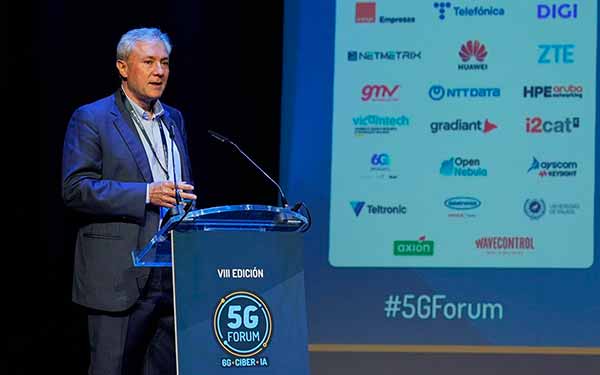
Narcís Cardona, director of the 6G Joint Innovation Centre at the iTEAM Research Institute of the Universitat Politècnica de València (UPV) and vice-president of the one6G Association, shared his particular vision, debunking myths about 6G and what is to come. “We have to rethink whether this speculative 6G investment is necessary,” said Narcís Cardona, who wondered whether we really need to go to speculative 6G. His answer was blunt: “No”. “Let’s protect the sector by not being so speculative. We have to look for something that makes 6G efficient and profitable,” he concluded, also pointing out that “some things that need to be rethought are to stop this ratio of renewing the technology every ten years”.
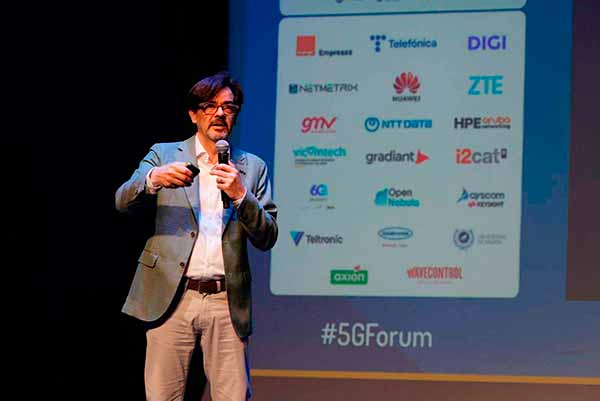
Project 6GDIFFERENT
Sergio Cabrero, leader of the Interactive Media Technologies line at Vicomtech, presented the results and developments of the 6GDIFFERENT project, a research initiative arising from the alliance between Vicomtech, Gradiant and i2CAT technology centres, which will come to an end in 2025. “This project has two main challenges: guaranteeing the continuity and quality of service in mobility over the virtualised network and NTN for the inclusion of aerial devices“, highlighted Sergio Cabrero, who shared different use cases and the challenges of capturing volumetric video or how to generate immersive environments.

José Joaquín Escudero, head of Advanced Mobile Communications at Gradiant, spoke about advanced 5G/6G communications from an industry-oriented perspective. He also shared different use cases of this Galician research centre that offers “proof of concept and, once the idea works, the customer decides whether to implement the product”.
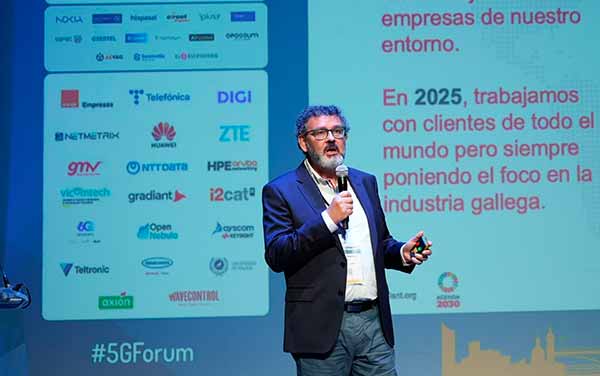
Arnau Singla Manau, research engineer in space communications at i2cat, shared advances and challenges of satellite networks in 5G and 6G and assured that “non-terrestrial networks (NTN) are not going to be an extension of future networks, but a native network”.
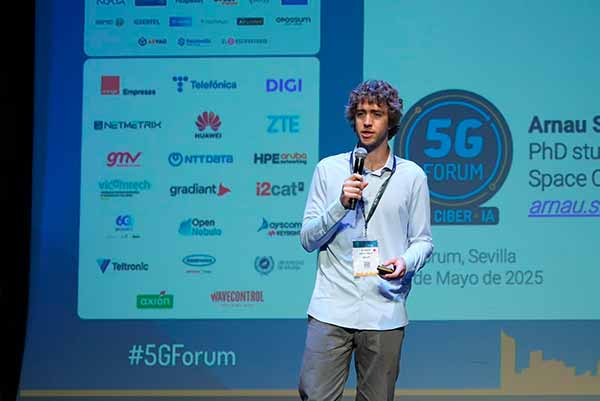
Zaloa Fernandez, Senior Researcher at Vicomtech, introduced the concept of intelligent orchestration, i.e. how smarter and more autonomous mobile networks are being built, capable of adapting themselves to changes in real time.
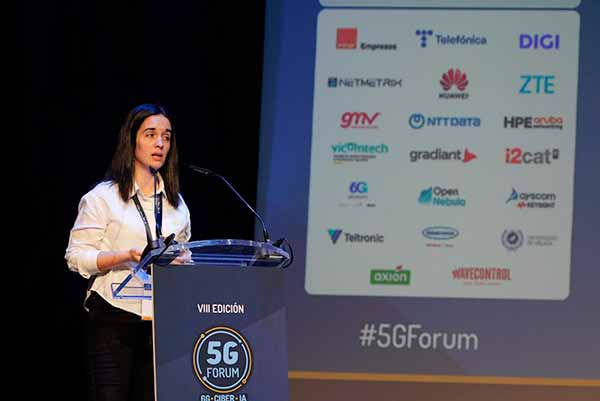
5G Private Networks
Rubén Gutiérrez de la Torre, Solutions Engineer at Keysight, shared lessons learned when setting up a 5G Private Network under the experience of this leading company in the test and measurement market: “You have to think ahead with good planning and design”, he said.

Alfonso Carrillo, Chief Edge Solutions Architect at OpenNebula Systems, spoke about ONEedge5G, an industrial research project focused on developing advanced techniques. Among other use cases, OpenNebula has developed AI for energy efficiency and AI for data processing to improve the optimisation of data traffic in 5G networks and third party services.
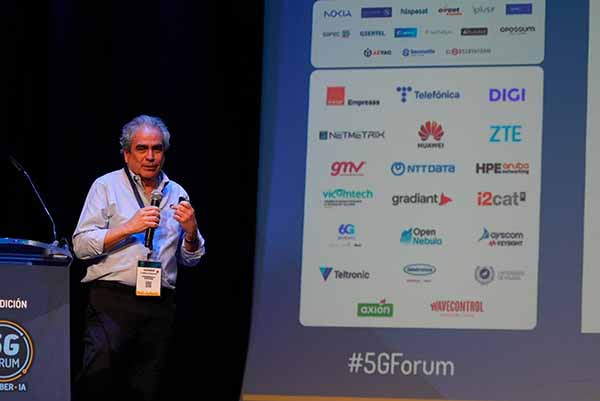
Carlos Alonso, manager of Wavecontrol’s applications department, explained how MonitEM-IoT, a new solution for assessing human exposure to electromagnetic fields (EMF), works. “Its main features are that it covers both 5G bands, sending data to a control centre that allows alarms to be managed and data to be published,” he said.
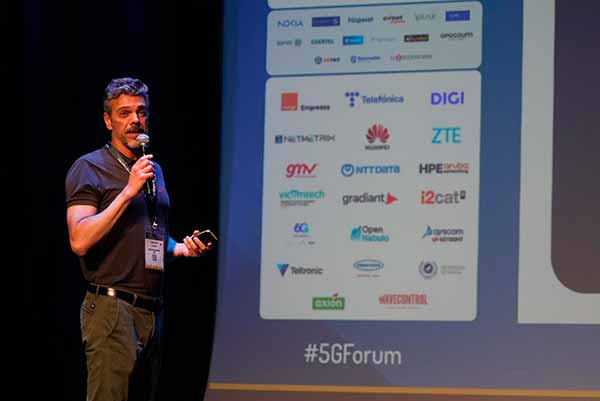
Salvador Mateos, CEO of Ingenalia, also spoke about radio mediation from a more practical point of view, offering examples of several use cases. “5G SA is going to require a regulatory adaptation because they do not concentrate the signal in a single direction”, being “necessary a new characterisation of the reference volume”.
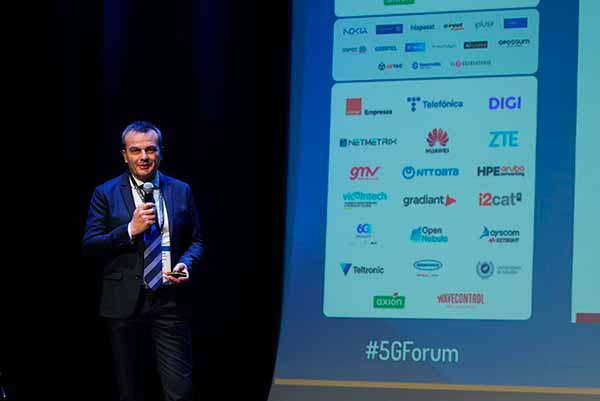
Marina García Sahagún, Managing Consultant at iPlus|F, focused her presentation on energy savings in 5G by talking about sustainability and energy efficiency. “Digital transformation can be sustainable and energy saving is the key,” she said.
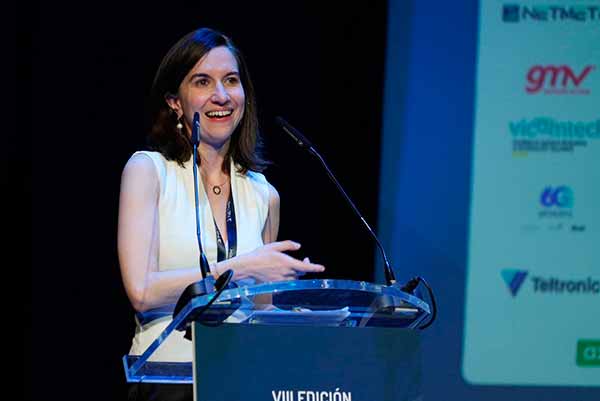
Exhibition area with demonstrations
The event features an exhibition area during the on-site sessions at the Cartuja Auditorium from 12-14 May. MasOrange pioneered the deployment of a 5G Advanced network with higher capacity, lower latency, immersive communications, massive connectivity and more intelligent and integrated ground-orbit networks. Telefónica has three demonstrations during the three on-site days that bring technological innovation closer to everyday life: a drone on display, virtual reality glasses combined with a smart helmet, a Xiaomi robot and a robot dog that moves with 5G technology with transversal functionality.
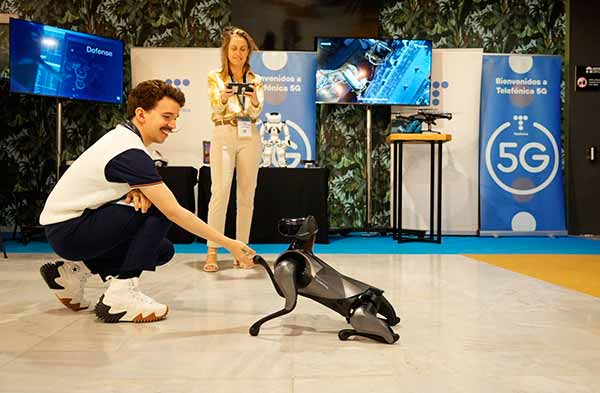
Secmotic presented Seclive, a solution designed to improve safety in the workplace through the use of computer vision and technology. Vicomtech has in its exhibition area several examples of immersive experiences that combine 3D video and extended reality (XR) technologies as a sample of what will be possible with the mobile networks of the future, among others. Wavecontrol is showcasing MonitEM-IoT, a solution that allows exhaustive control of human exposure to electromagnetic fields, ensuring that technological advances do not affect public safety.
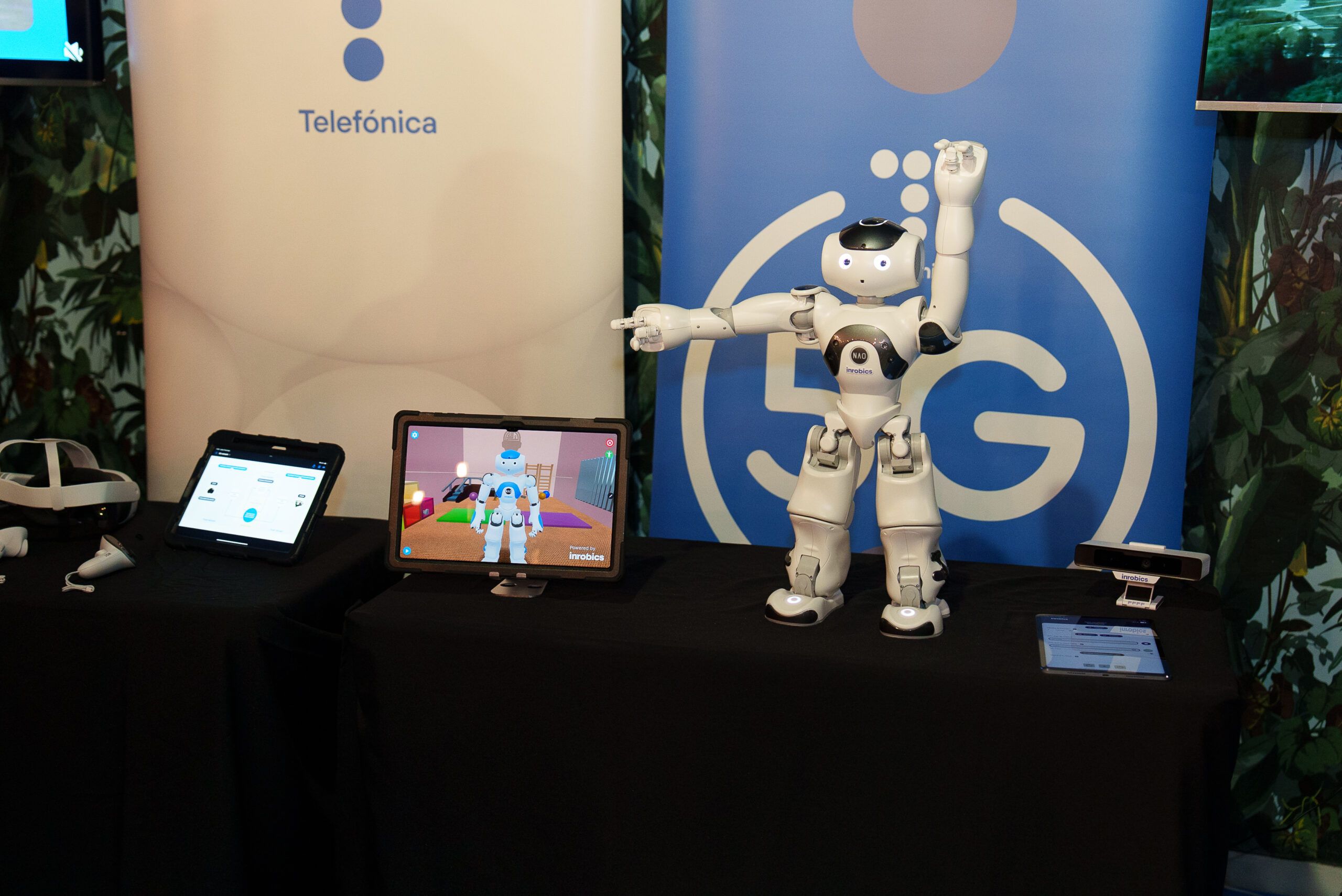
SAPEC is demonstrating how a 5G private network can be deployed in less than 20 minutes, configured and managed. TESLA offers the possibility to enjoy several smart cars and experience driving them on a closed circuit. In addition, you can enjoy exclusive demonstrations from leading companies such as GMV, Gradiant, OpenNebula, Ayscom, Teltronic, Axion, Nokia, Rohde & Schwarz, Kenmei and AIFunded, as well as the University of Malaga and ‘El Observatorio’ from Medina Media Events.
Successful participation
A total of 87 speakers, 40% of whom are women, will discuss innovation, projects and 5G deployment in Spain and internationally. European, American and Asian experts and leaders will present the latest in 5G technology, Artificial Intelligence and cybersecurity, and discuss when the next generation of mobile telephony will arrive: 6G.
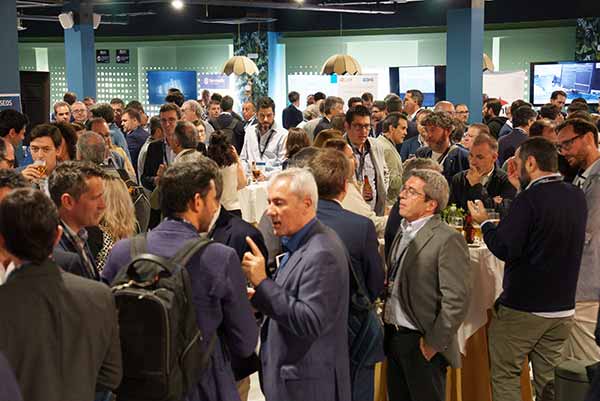
Telephone operators, technology multinationals, institutions, local, regional and national administrations, organisations, universities and leading companies in the telecommunications sector, totalling 70 entities from the national and international scene, make up a top-level agenda. Participants include the country’s main operators – MasOrange, Telefónica, DIGI and Vodafone – along with other leading multinationals in the sector.
All the conferences are available for on-demand viewing through ‘El Observatorio’, the digital platform of Medina Media Events, where each conference will be available 24 hours a day, 365 days a year, free of charge.
The eighth edition of the 5G Forum is organised by Medina Media Events and is supported by Orange, Telefónica, DIGI, Netmetrix, Huawei, ZTE, GMV, NTT DATA, HPE – Aruba Networking, Vicomtech, Gradiant, i2CAT, OpenNebula, Ayscom, Keysight, Teltronic, Datatronics, Oracle, Universidad de Málaga, Axion, Wavecontrol, Nokia, Rohde & Schwarz, Hispasat, Circet, Iplus|F, Dihbu, SAPEC, Gsertel, Kenmei, Ingenalia, AIFunded, Opossum, AEVAC and Secmotic, among others.
Today, the third day in person: Cyber Day
This Wednesday, 14 May, the third face-to-face conference will be held at the Cartuja Auditorium – managed by Yventu – dedicated entirely to cybersecurity. The ‘Cyber Day’ will bring together experts such as María de Miguel, Director of the Telecommunications Security Division of the Subdirectorate General for Digital Security of the Ministry for Digital Transformation and the Civil Service; Pilar Sancho, specialist prosecutor in Computer Crime in Cádiz; Gonzalo Temes, Director of Digital Solutions at MasOrange; José Capote, Head of Cybersecurity and Privacy at Huawei Spain and Portugal; Joel Zaragoza, Technical Director of Netmetrix; María José Escalona, University Professor in the Department of Computer Languages and Systems at the University of Seville; and Juan Miguel Pulpillo, expert and coordinator of the Centre for Industrial Cybersecurity (CCI). In addition, two panels will be held. The first organised by El Observatorio on the state of cybersecurity in Spain from the private sector and a second organised by the Official College of Telecommunications Engineers of Western Andalusia and Ceuta moderated by Manuel Ortigosa, dean of the Official College of Telecommunications Engineers.